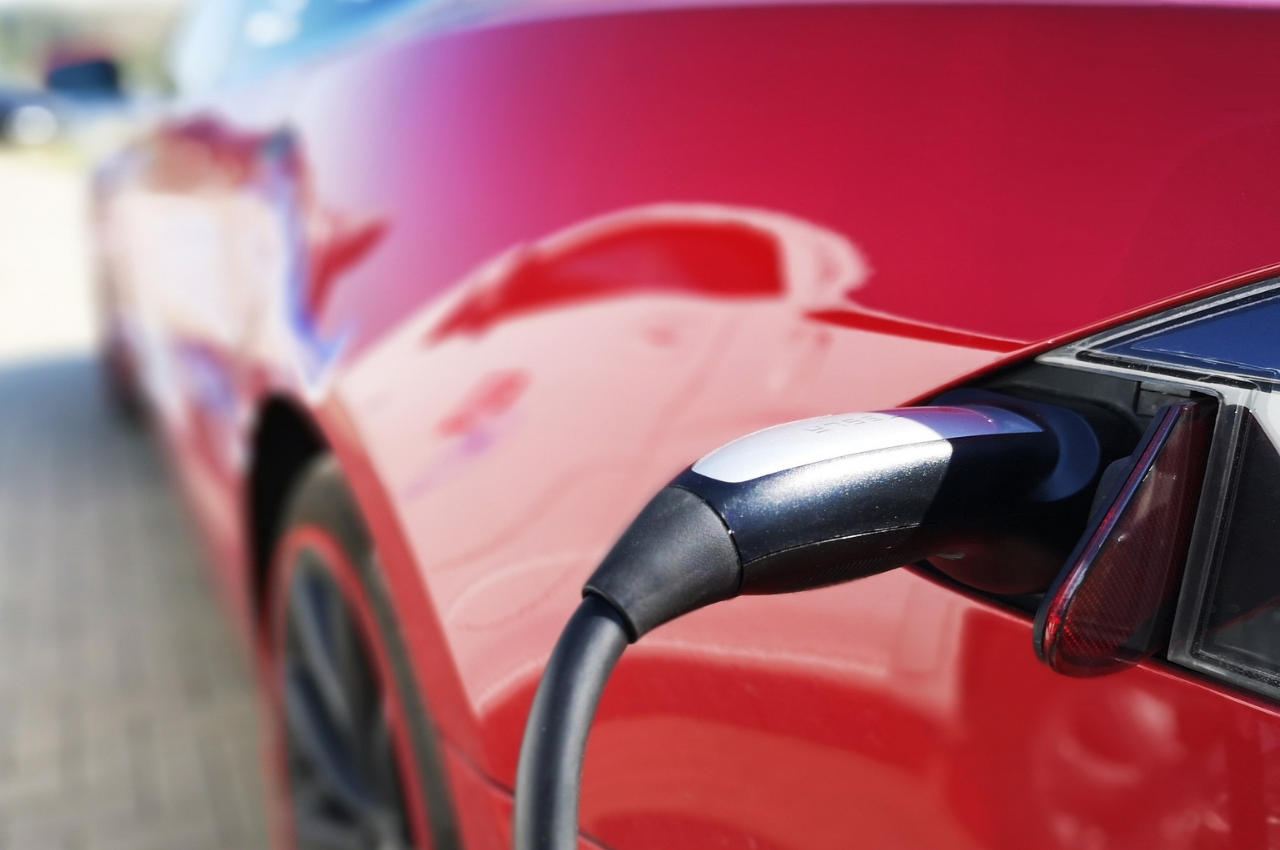Ever since electric vehicles (EVs) began appearing on our roads, people have been speculating whether the next 12 months would be ‘the year’ of the electric car. Experts have often referred to the ‘tipping point’, only to be proved wrong as sales numbers remain stubbornly low.
However, after many false dawns, 2020 saw a step-change in both attitudes and registrations and it seems now that, finally, EVs have made that long-awaited and irreversible breakthrough.
Numbers
The statistics make compelling reading. In September 2020, EVs outsold diesel cars for the first time ever – 18.5% marketshare compared to 18.4% – and that trend has repeated every month since then, with EVs increasing their margin incrementally all the time.
A further injection came in November, when UK Prime Minister Boris Johnson announced that the ban on the sale of new petrol and diesel vehicles would be brought forward to 2030. The ban had originally been earmarked for 2040.
Literally overnight consumer interest in EVs surged, with Auto Trader reporting an increase in searches of 124%. As such, it is now predicting that EV sales could overtake both petrol and diesel by 2025, while alternatively fuelled vehicles (AFV) could reach that landmark even earlier, in 2024.
Predictions
It predicts that EVs will account for around 10% of the total British car parc and AFVs around 18% by 2025, with these figures climbing rapidly to 30% and 40% by 2030.
The report said, ‘Post the ban on internal combustion engine sales in 2030 and then hybrid sales in 2035, it’s likely that, if assuming typical scrappage rates and exclude the exception of classic or collector cars, ICE vehicles will almost disappear from the car parc by the mid-2040s.’
These estimations appear to be borne out by figures from the Society of Motor Manufacturers and Traders. It found that while overall car production fell by 29% in 2020 in the UK, the production of electric and hybrid models actually rose 18.8%, with pure battery vehicles accounting for 4.5% of all units manufactured, up from 3.4% in 2019.
Models
It says there are now more than 100 plug-in models available in the UK, with upwards of 35 new models coming to market this year. However, even that number may be an under-estimation as vehicle manufacturers rush to bring forward their EV ranges. This month alone Jaguar Land Rover and Ford have announced plans to go all electric by 2030 respectively, following similar announcements by the likes of Volvo (2019), Honda (2025), PSA Group (2025), and Volkswagen (2026).
SMMT chief executive Mike Hawes said, ‘With manufacturers bringing record numbers of electrified vehicles to market over the coming months, we will work with government to encourage drivers to make the switch.’
Expected to soar
So, with an estimated 165,000 EVs already on UK roads, and that number expected to soar to a million by 2025, is the aftermarket ready? The obvious answer is no. A lack of skills in repairing EVs has been well-documented, as has the potential risks this brings, but there is another area that has not been so widely discussed – charging points.
If EVs become as widespread as anticipated, and in such a short time-frame, then repairers will need to ensure they have the infrastructure on site to support them. Vehicle manufacturers and work providers may insist on it.
Network
In January Activate Group surveyed its approved network to gauge EV charging capabilities, finding that 56% of survey respondents confirmed that they already have EV charging on site for vehicles undergoing repair work, with a further 34% offering a charging service to vehicles on site for other services.
Head of Business Services, Activate Group, John Gaynor, said: “As part of our supply chain strategy, we plan to put a UK-wide EV charging network in place for use by our fleet and insurance customers by the end of 2021.”
And while the survey also found that 80% of those who had no EV charging points on site said the extra power supply required did not pose a problem, businesses that take this for granted could be setting themselves up for a rude awakening.
Because while capacity may not be a problem now, it could become so.
Installations
Each substation on the national grid has a certain capacity, and each building is allocated a certain amount of that. Therefore, before any business installs charge points it needs to be sure the site itself has spare capacity, and also that the serving substation does.
Most individual sites have headroom, and if they need to go above it there is the potential to ‘rent’ more capacity from adjacent sites.
However, the really serious issue arises when a host of businesses max out their own capacity, and in so doing push demand on the substation to the limit, because whichever business is responsible for pushing the substation beyond its threshold is also responsible for the cost of upgrading it – a cost which could run into hundreds of thousands of pounds. It’s not inconceivable then, that a scenario could develop where a handful of organisations are holding back in investment, waiting for a rival blink first and thus incur the cost.
Steve Bolt, business development director at BCR Associates, a cost management consultancy in the energy sector, among others, said, ‘There is a perception that you can just put charging points in where you like, but that’s not the case. Every building has a kilowatt allowance and local substations can only support a certain amount of power. But there is an assumption that the grid can cope – very rarely does anybody have an idea this is an issue.’
National
But it’s not a just a local issue. It is widely recognised now that the national EV infrastructure in place is vastly inadequate to cope with surging numbers, and the installation of charging points will need a huge impetus in the coming years.
According to the well-respected Policy Exchange think tank, there will need to be an estimated 400,000 public chargers in the UK by 2030 if the petrol and diesel ban is to be viable. At the moment there are well below 10% of that (some estimates put it at 35,000 while others suggest the number is barely more than half that, at 20,775).
A report by Policy Exchange found that over the last three years an average of 7,000 public charge points have been installed annually, meaning that number will have to increase five-fold between now and 2030.
Boris Johnson has pledged £1.3bn to developing the charging infrastructure over the next four years, and earlier this year the government unveiled a new £50m scheme to increase the number of charge points in rural areas. Under the EV Homecharge Scheme, small businesses, landlords and leaseholders can get up to £350 in state funding to install a charge point.
Private sector
Meanwhile, the private sector is also rushing to fill this void. Gridserve opened the first forecourt dedicated to charging EVs in Braintree in December 2020. The site, which can charge 36 vehicles at once, is the first of more than 100 similar facilities planned for the UK.
Traditional oil behemoths Shell and BP are also ambitious in this area. Shell has recently purchased EV charging firm Ubitricity ‘to support drivers as they switch to lower-carbon transport’ and said that acquiring the 2,700-strong public charging network continues its expansion into the on-street EV charging market.
The company has already installed than 1,000 ultra-fast EV chargers across 430 retail sites in the UK, while its first bespoke EV charging forecourt is set to be unveiled in Fulham – first but by no means last.
BP meanwhile acquired the Chargemaster and Polar networks two years ago, now renamed bp pulse, and the company also manages 7,000 public charge points in the UK which it aims to more than double that to 16,000 by 2030.
So, with everyone else apparently at it, surely the time is ripe for repairers to get in on the charging act?
Planning
For those considering it, it’s worth remembering that not all chargers are created equal so what suits one business might not suit another.
Regarded as one of the country’s top repairers, with manufacturer approvals from the most prestigious brands in the world, including Tesla, Chartwell can consider itself to be an expert in this area.
Director Chris Brightmore said, ‘The speed of charging is the decider on the decision on how many points you need. Most electric cars will trickle charge off standard 240v over many hours, so no investment is needed there. But the speed comes from increasing the kW supply.
‘Fast chargers are rated at 7-22 kW and usually take between three and seven hours. Obviously as you get faster chargers you need less outlets, but the consumption needs a better infrastructure.
‘Rapid chargers are quicker still, and there are two kinds. Rapid AC charging just uses more power (43kW), while rapid DC chargers supply DC current straight to the car, allowing the car to charge at 50kW. All of these options need a suitable three-phase supply to achieve the ratings, often more than your invertor welders and other repair tooling require, so it needs to be looked at in detail by professionals.’
Speed
In terms of costs, the speed of charge determines installation costs. While EVs have adaptors to connect to various supply options from 240v up to 120kw, the faster charge options often require alterations to substations and the way power is supplied to the building, and that can get expensive.
Chris said, ‘The bigger the pipe-in the more you use and the more you get charged, it’s like water, more can flow so more gets charged.’
- Fully charging a 60kWh electric car will cost between £8.30 and £9.40
- A typical public rapid charging point in the UK costs around 30p per kWh
Of course, energy usage is variable and it’s impossible to know exactly how much you will use over the course of a year. But most contracts provide volume tolerance of 20% either way, with rates only rising if you go below 80% or above 120% of the total amount of energy bought.
Options
As ever though, there is a valid counter argument to rushing in. Although it is probably inevitable that virtually all businesses, not just bodyshops, will have charging points on site in the future, holding fire on that investment for a little while might be a sensible – and practical – approach.
Steve continued, ‘Since Boris Johnson announced the 2030 ban there has been a huge swathe of people saying they need to put EV chargers in place. But the negative side of the repair industry is that bodyshops don’t make large profits. Most don’t make much more than 10% profit. So, they need to ask themselves how many EV jobs they actually get and could they cope with what they’ve got for now?
‘Many of these shops have had a really tough year and just don’t have the cash. It might make sense for them to build up a fund now to enable them to do this in the next few years. The technology is changing and these things will get cheaper, so it probably wouldn’t hurt if they waited another 18 months.’
He also suggests that as we hurtle towards carbon reduction, even more incentives and grants will enter the market.
A year and a half may be about the limit of the delay though, as the automotive aftermarket will inevitably be dragged into the drive towards carbon neutrality by pressure being exerted down the supply chain.
Carbon neutral
The 2050 deadline to bring all carbon emissions to net zero by 2050 is well known. But less well known are the interim targets and the steps now being taken to achieve this status.
Already all companies in the UK with a workforce of more 250 must report carbon usage, while also providing their four-year plans to reduce energy usage. Heavy fines are imposed to those companies who fall short, and the financial penalties are likely to be ratchetted up in November when Glasgow hosts the 26th UN Climate Change Conference.
Dom Napier, managing director of Carbon Neutral Repair, which helps companies reduce their carbon footprints, said, ‘Carbon and carbon neutrality is very much on the agenda. 2050 is a world away, but there is an interim target in 2030 that the UK has to meet. At the moment we are tracking 20% behind that so I expect after November that the cost of being heavy on carbon is going to increase, and increase significantly.
‘That means if you are in a supply chain you are at risk that your customer or someone else in your supply chain is already looking at your carbon footprint. Procurement will no longer be based on price and service. It will be based on price, service and carbon neutrality.’
Greater awareness
Further, he says the rise in the EV car parc underpins a much greater environmental awareness among consumers, and repairers who get on board with that could steal a march on their competitors.
Dom said, ‘At the moment drivers overtly conscious of their footprint don’t have anywhere to go in terms of servicing and repairing that continues their own environmental commitment. So being able to demonstrate that you can service or repair that vehicle in a carbon neutral manner is absolutely aligned with the customer’s own environmental focus. People will definitely pay a premium for that so it’s a huge opportunity for the sector.’
Opportunity
Opportunity is definitely the word. In just eight years there will be an estimated 10 million public chargers in circulation, not to mention another 50 million private chargers. The charging infrastructure market value is tipped to top £100m by then, rising at an annual compound growth rate of 33%.
Very rarely do entire industries change as rapidly as the automotive sector is now, and in every case there have been winners and losers. Timing is everything, but for those who get it right the next few years could be a welcome relief after the last few.
Top tip
Although there might not be great savings to be made by reducing energy costs – when annual bills are typically between £10,000 and £20,000, turning the heating off when the workshop door is open and installing LED lights will only bring marginal gains – there is one other that might yield greater returns.
Steve Bolt said, ‘Make sure you get a decent contract. Too many repairers that I’ve met are not businesspeople; they are happier mending cars than they are looking at the business end of things and that’s where they fall down, because they don’t give enough attention to the things that cost them money. One repairer we work with was quoted £19,000, but we got it for £11,000.”
He also urged businesses to make sure they don’t let their energy supply contracts run down in the first place. Unlike mobile phone contracts, which tend to roll over on similar terms, if businesses let their energy contract expire they could see rates surge by 50%.
















